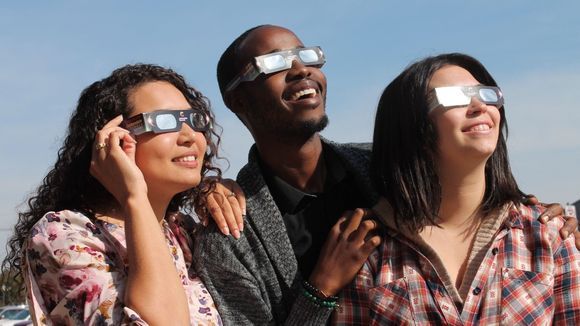Droves of people are in planning stages to get the best shots possible of the total solar eclipse on Aug. 21.
For most of us, getting photos of the sun with our tiny smartphones just won’t cut it. But you know what will? A cool time-lapse of the scene, as we watch the sun slip briefly behind the moon, and day becomes night and then day again.
How to get a great time-lapse shot? You’ve come to the right spot. Especially if you're interested in doing it on a smartphone or with the tiny GoPro camera.

You’ve seen the time-lapse shots often in movies, in opening sequences when the world seems to speed by, clouds move to a different rhythm and people are running, not walking, through the streets, at ultra high speeds. For a crash course, check out the opening of Netflix’s House of Cards.
Time-lapses look cool, and are really easy to do.
Let’s start with your smartphone.
Both recent iPhones and Samsung Galaxy phones have a time-lapse feature within the camera app.
Reader alert: Experts say you need to put a solar filter over the smartphone during the eclipse to protect the image sensor, but Apple says not to worry. For a wide shot of the scene, in which the sun itself is a tiny, minor character, you're fine. On the iPhone, the time-lapse feature is at the tail left, after Slo-Mo.
To make a great time-lapse, you need two important tools, a tripod and an adapter to fit the phone onto the tripod. You can buy a tripod for as little as $25, and the adapter for less than $10.
This is important because your shot will need to record for at least five minutes, and you can’t possibly hold the camera steady for that length of time. Every movement you make will be magnified several times. The last thing you want to show anyone is a shaky video.On eclipse day, beyond the tripod and smartphone tripod adapter, you’ll also need one other vital accessory - the Solar Filter glasses to protect your eyes during the eclipse. Remember, you can’t look up at the skies or you might go blind.
Position the phone horizontally (NOT VERTICALLY!!!) to capture more of the scene, and at least 5 minutes before it’s ready to start, click record on the phone.
We recommend shooting for at least 20 minutes for the eclipse, which in turn will give you about a 2-3 minute video. Let it roll before, during and after the eclipse, and you'll get a great presentation of day to night and back to day. Plus all the revelers watching with you.)
From there, you can trim the front and back of the clip in your phone, with a free app like Apple’s iMovie or GoPro’s QuikStories.
I should mention that there’s also an app from Instagram, called Hyperlapse, that promises quality time-lapse shots by handheld, utilizing image stabilization techniques. My experience is that the app is fun, but the resulting video is still shaky and not suitable for sharing.
Beyond the smart phone, many photographers love shooting on the tiny GoPro because of the more expansive view you get with the super wide-angle lens.
On the GoPro, you’ll need the tripod mount adapter, which costs less than $10. As with iPhone, GoPro says you won't need a solar filter since it will be a wide shot of the scene.
You get two options for shooting on the newer Hero 5 camera: Time Lapse photo or Time Lapse video. The video mode automatically processes the shots for you. While in photo mode, you’ll get a gazillion photos that need to be processed in GoPro’s free desktop app, or your own favorite video editor, and turned into a movie. You'll get more control with photo mode, but I believe most readers would prefer the ease of video mode.
The Great American total solar eclipse is the first coast-to coast happening since 1918. It begins in Oregon at 10:15 a.m. PT and continues for 90 minutes through Idaho, Wyoming, Nebraska, Missouri, Illinois, Tennessee, Georgia and South Carolina.

